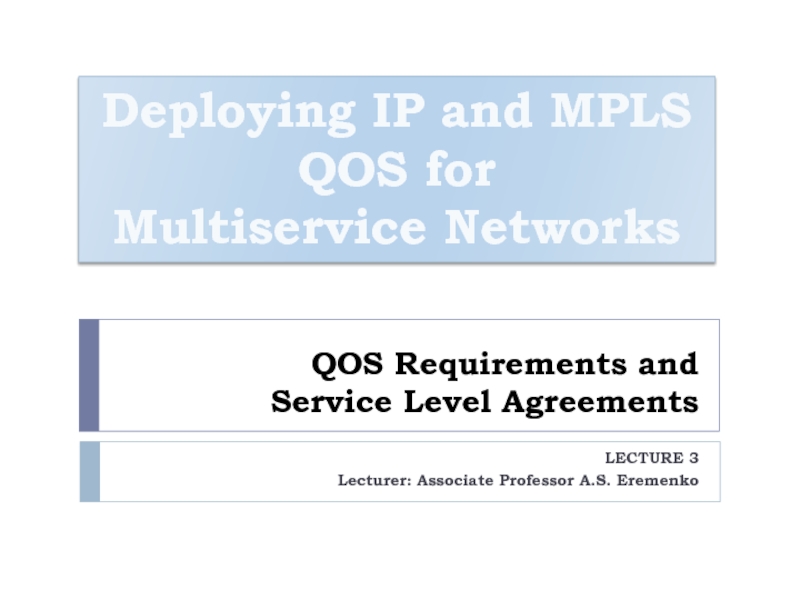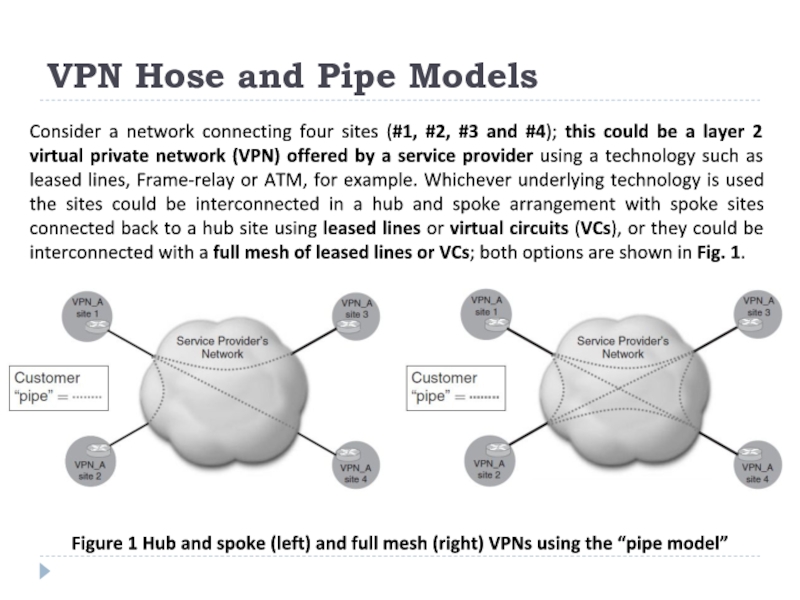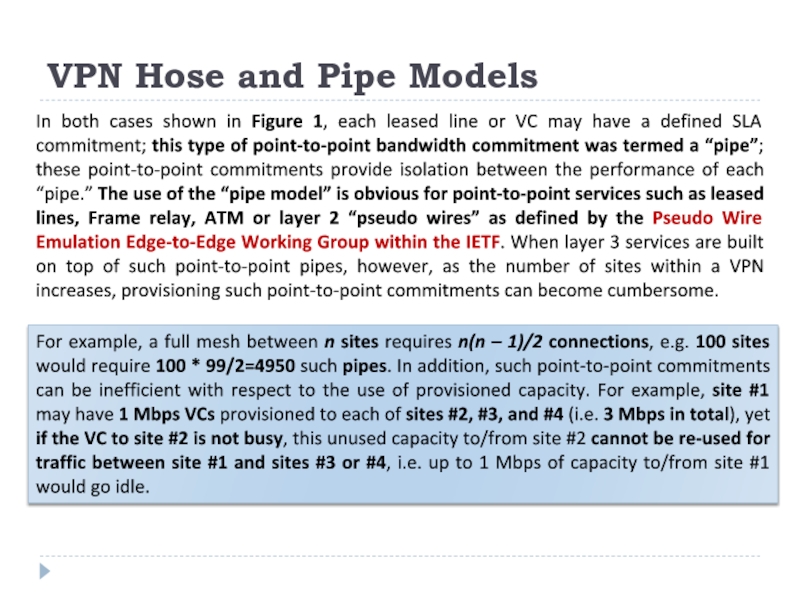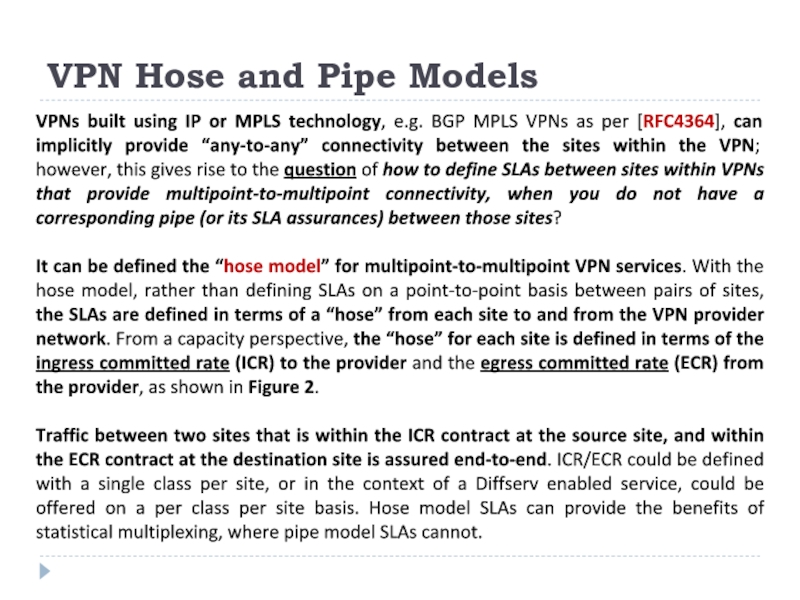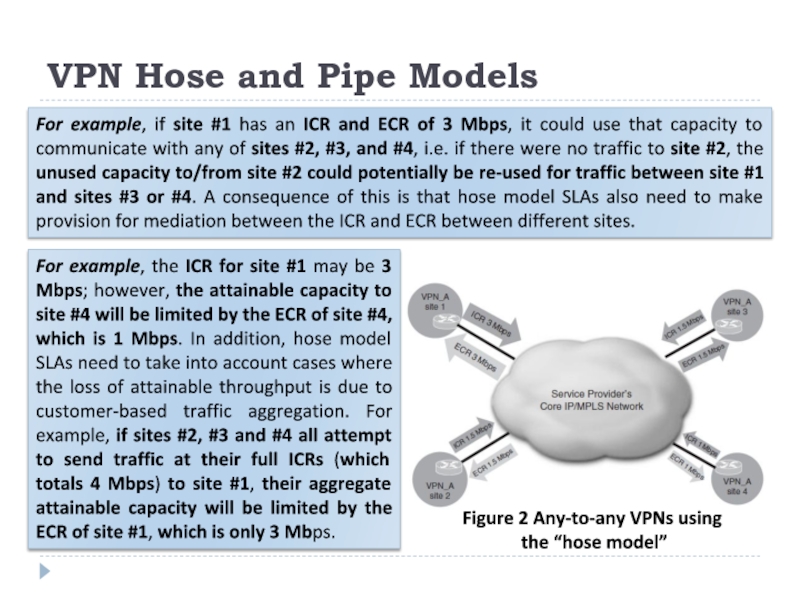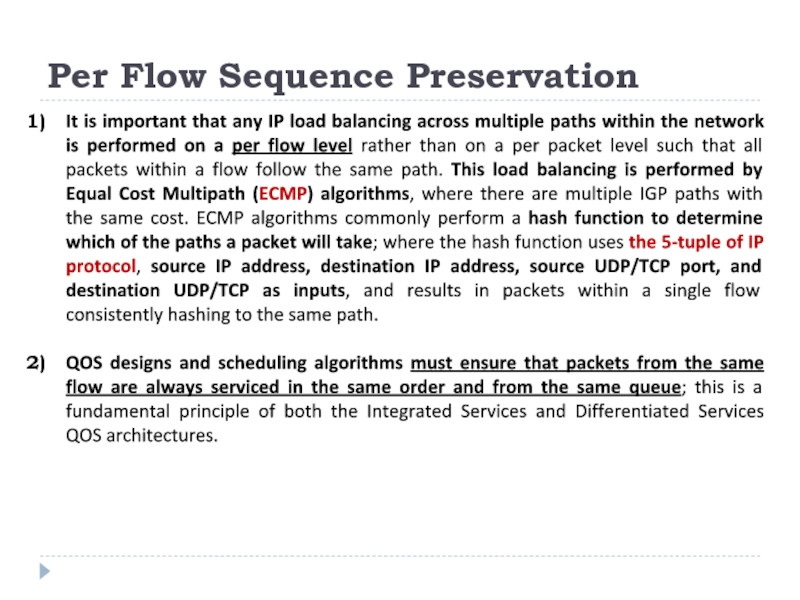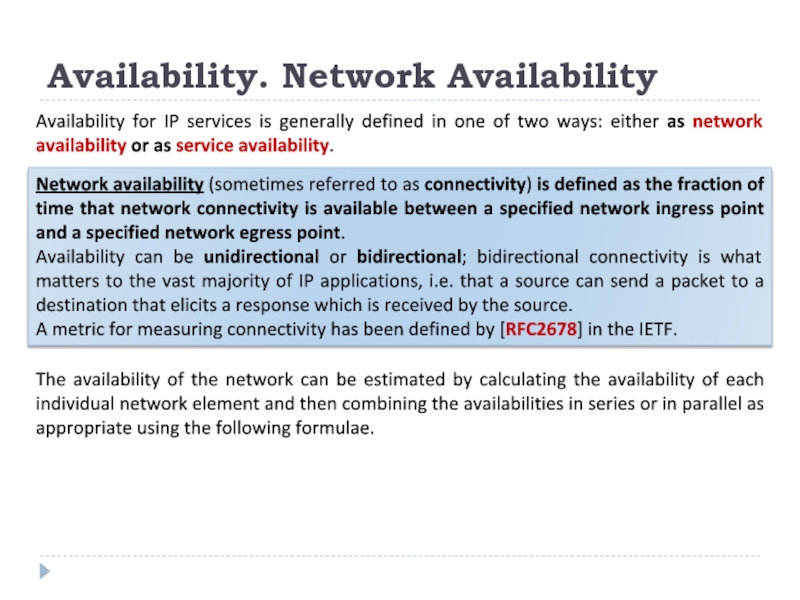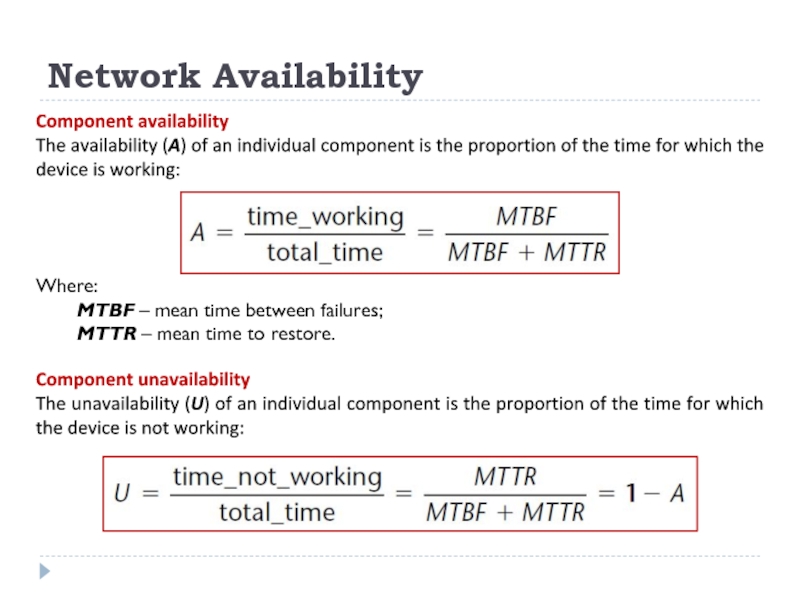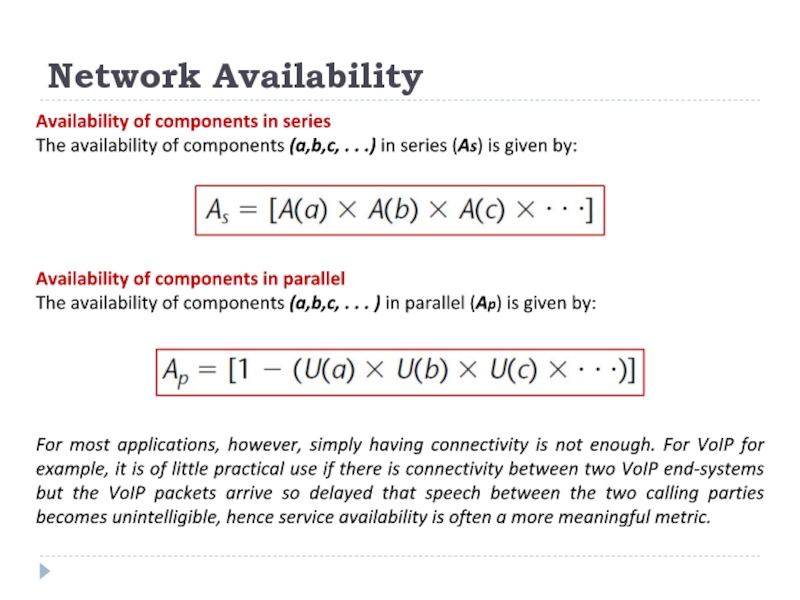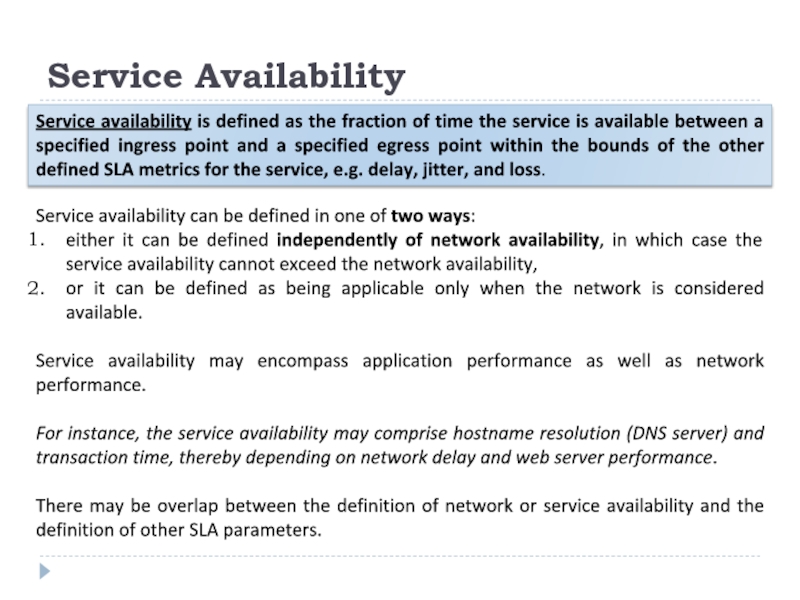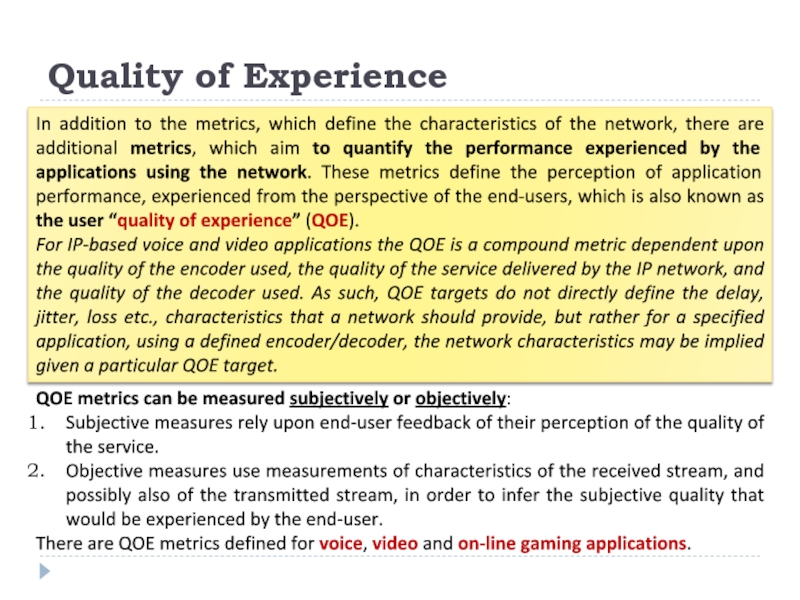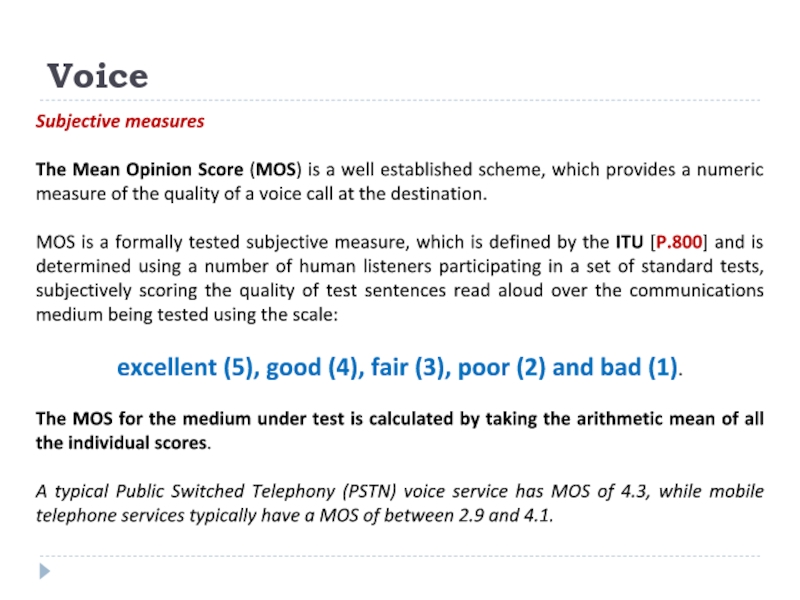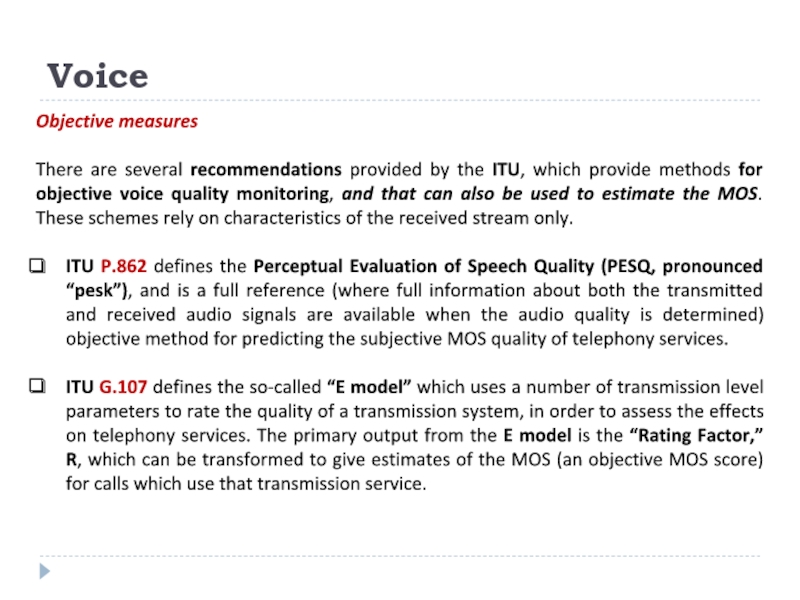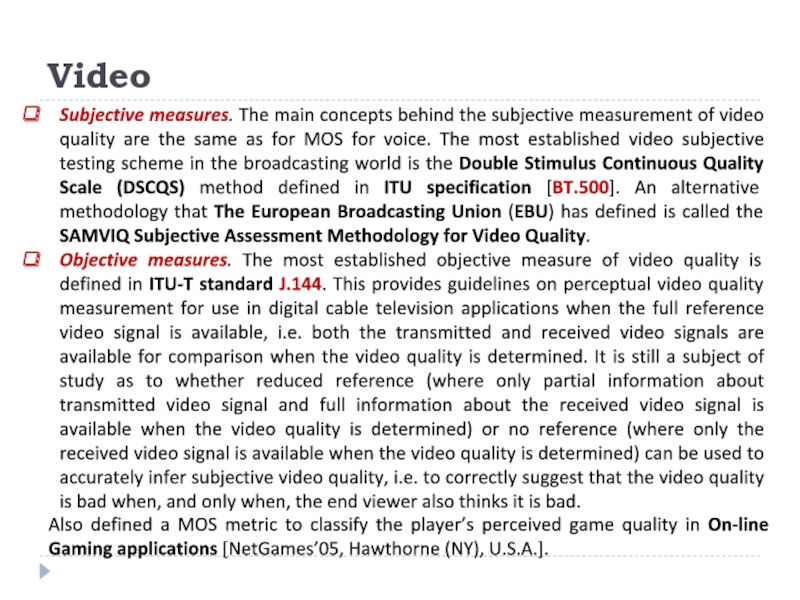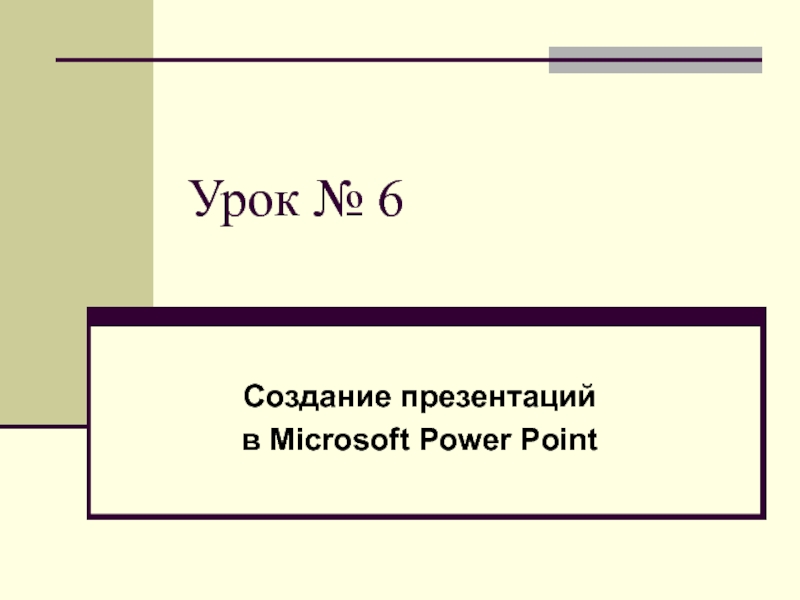- Главная
- Разное
- Дизайн
- Бизнес и предпринимательство
- Аналитика
- Образование
- Развлечения
- Красота и здоровье
- Финансы
- Государство
- Путешествия
- Спорт
- Недвижимость
- Армия
- Графика
- Культурология
- Еда и кулинария
- Лингвистика
- Английский язык
- Астрономия
- Алгебра
- Биология
- География
- Детские презентации
- Информатика
- История
- Литература
- Маркетинг
- Математика
- Медицина
- Менеджмент
- Музыка
- МХК
- Немецкий язык
- ОБЖ
- Обществознание
- Окружающий мир
- Педагогика
- Русский язык
- Технология
- Физика
- Философия
- Химия
- Шаблоны, картинки для презентаций
- Экология
- Экономика
- Юриспруденция
QOS Requirements and Service Level Agreements. VPN Hose and Pipe Models. Per Flow Sequence Preservation презентация
Содержание
- 1. QOS Requirements and Service Level Agreements. VPN Hose and Pipe Models. Per Flow Sequence Preservation
- 2. VPN Hose and Pipe Models Consider a
- 3. VPN Hose and Pipe Models In both
- 4. VPN Hose and Pipe Models VPNs built
- 5. VPN Hose and Pipe Models Figure 2
- 6. Per Flow Sequence Preservation IP does not
- 7. Per Flow Sequence Preservation It is important
- 8. Availability. Network Availability Availability for IP services
- 9. Network Availability Component availability The availability (A)
- 10. Network Availability Availability of components in series
- 11. Service Availability Service availability is defined as
- 12. Quality of Experience QOE metrics can be
- 13. Voice Subjective measures The Mean Opinion
- 14. Voice Objective measures There are several
- 15. Video Subjective measures. The main concepts behind
Слайд 1QOS Requirements and
Service Level Agreements
LECTURE 3
Lecturer: Associate Professor A.S. Eremenko
Deploying IP
Слайд 2VPN Hose and Pipe Models
Consider a network connecting four sites (#1,
Figure 1 Hub and spoke (left) and full mesh (right) VPNs using the “pipe model”
Слайд 3VPN Hose and Pipe Models
In both cases shown in Figure 1,
For example, a full mesh between n sites requires n(n – 1)/2 connections, e.g. 100 sites would require 100 * 99/2=4950 such pipes. In addition, such point-to-point commitments can be inefficient with respect to the use of provisioned capacity. For example, site #1 may have 1 Mbps VCs provisioned to each of sites #2, #3, and #4 (i.e. 3 Mbps in total), yet if the VC to site #2 is not busy, this unused capacity to/from site #2 cannot be re-used for traffic between site #1 and sites #3 or #4, i.e. up to 1 Mbps of capacity to/from site #1 would go idle.
Слайд 4VPN Hose and Pipe Models
VPNs built using IP or MPLS technology,
It can be defined the “hose model” for multipoint-to-multipoint VPN services. With the hose model, rather than defining SLAs on a point-to-point basis between pairs of sites, the SLAs are defined in terms of a “hose” from each site to and from the VPN provider network. From a capacity perspective, the “hose” for each site is defined in terms of the ingress committed rate (ICR) to the provider and the egress committed rate (ECR) from the provider, as shown in Figure 2.
Traffic between two sites that is within the ICR contract at the source site, and within the ECR contract at the destination site is assured end-to-end. ICR/ECR could be defined with a single class per site, or in the context of a Diffserv enabled service, could be offered on a per class per site basis. Hose model SLAs can provide the benefits of statistical multiplexing, where pipe model SLAs cannot.
Слайд 5VPN Hose and Pipe Models
Figure 2 Any-to-any VPNs using
the “hose
For example, if site #1 has an ICR and ECR of 3 Mbps, it could use that capacity to communicate with any of sites #2, #3, and #4, i.e. if there were no traffic to site #2, the unused capacity to/from site #2 could potentially be re-used for traffic between site #1 and sites #3 or #4. A consequence of this is that hose model SLAs also need to make provision for mediation between the ICR and ECR between different sites.
For example, the ICR for site #1 may be 3 Mbps; however, the attainable capacity to site #4 will be limited by the ECR of site #4, which is 1 Mbps. In addition, hose model SLAs need to take into account cases where the loss of attainable throughput is due to customer-based traffic aggregation. For example, if sites #2, #3 and #4 all attempt to send traffic at their full ICRs (which totals 4 Mbps) to site #1, their aggregate attainable capacity will be limited by the ECR of site #1, which is only 3 Mbps.
Слайд 6Per Flow Sequence Preservation
IP does not guarantee that packets are delivered
The simplest metric by which to measure the magnitude of re-ordering is as a re-ordering ratio, which is the ratio of re-ordered packets that arrived, relative to the total number of packets received. A number of other metrics for quantifying the magnitude of re-ordering are defined in [RFC4737].
Due to the adverse impact that packet re-ordering can have on the performance of some applications, it is accepted best practice in IP network design to prevent packet re-ordering within a flow.
There are two key design best practices in order to prevent packet re-ordering within a flow.
!
Слайд 7Per Flow Sequence Preservation
It is important that any IP load balancing
QOS designs and scheduling algorithms must ensure that packets from the same flow are always serviced in the same order and from the same queue; this is a fundamental principle of both the Integrated Services and Differentiated Services QOS architectures.
Слайд 8Availability. Network Availability
Availability for IP services is generally defined in one
Network availability (sometimes referred to as connectivity) is defined as the fraction of time that network connectivity is available between a specified network ingress point and a specified network egress point.
Availability can be unidirectional or bidirectional; bidirectional connectivity is what matters to the vast majority of IP applications, i.e. that a source can send a packet to a destination that elicits a response which is received by the source.
A metric for measuring connectivity has been defined by [RFC2678] in the IETF.
The availability of the network can be estimated by calculating the availability of each individual network element and then combining the availabilities in series or in parallel as appropriate using the following formulae.
Слайд 9Network Availability
Component availability
The availability (A) of an individual component is the
Where:
MTBF – mean time between failures;
MTTR – mean time to restore.
Component unavailability
The unavailability (U) of an individual component is the proportion of the time for which the device is not working:
Слайд 10Network Availability
Availability of components in series
The availability of components (a,b,c, .
Availability of components in parallel
The availability of components (a,b,c, . . . ) in parallel (Ap) is given by:
For most applications, however, simply having connectivity is not enough. For VoIP for example, it is of little practical use if there is connectivity between two VoIP end-systems but the VoIP packets arrive so delayed that speech between the two calling parties becomes unintelligible, hence service availability is often a more meaningful metric.
Слайд 11Service Availability
Service availability is defined as the fraction of time the
Service availability can be defined in one of two ways:
either it can be defined independently of network availability, in which case the service availability cannot exceed the network availability,
or it can be defined as being applicable only when the network is considered available.
Service availability may encompass application performance as well as network performance.
For instance, the service availability may comprise hostname resolution (DNS server) and transaction time, thereby depending on network delay and web server performance.
There may be overlap between the definition of network or service availability and the definition of other SLA parameters.
Слайд 12Quality of Experience
QOE metrics can be measured subjectively or objectively:
Subjective measures
Objective measures use measurements of characteristics of the received stream, and possibly also of the transmitted stream, in order to infer the subjective quality that would be experienced by the end-user.
There are QOE metrics defined for voice, video and on-line gaming applications.
In addition to the metrics, which define the characteristics of the network, there are additional metrics, which aim to quantify the performance experienced by the applications using the network. These metrics define the perception of application performance, experienced from the perspective of the end-users, which is also known as the user “quality of experience” (QOE).
For IP-based voice and video applications the QOE is a compound metric dependent upon the quality of the encoder used, the quality of the service delivered by the IP network, and the quality of the decoder used. As such, QOE targets do not directly define the delay, jitter, loss etc., characteristics that a network should provide, but rather for a specified application, using a defined encoder/decoder, the network characteristics may be implied given a particular QOE target.
Слайд 13Voice
Subjective measures
The Mean Opinion Score (MOS) is a well established scheme,
MOS is a formally tested subjective measure, which is defined by the ITU [P.800] and is determined using a number of human listeners participating in a set of standard tests, subjectively scoring the quality of test sentences read aloud over the communications medium being tested using the scale:
excellent (5), good (4), fair (3), poor (2) and bad (1).
The MOS for the medium under test is calculated by taking the arithmetic mean of all the individual scores.
A typical Public Switched Telephony (PSTN) voice service has MOS of 4.3, while mobile telephone services typically have a MOS of between 2.9 and 4.1.
Слайд 14Voice
Objective measures
There are several recommendations provided by the ITU, which provide
ITU P.862 defines the Perceptual Evaluation of Speech Quality (PESQ, pronounced “pesk”), and is a full reference (where full information about both the transmitted and received audio signals are available when the audio quality is determined) objective method for predicting the subjective MOS quality of telephony services.
ITU G.107 defines the so-called “E model” which uses a number of transmission level parameters to rate the quality of a transmission system, in order to assess the effects on telephony services. The primary output from the E model is the “Rating Factor,” R, which can be transformed to give estimates of the MOS (an objective MOS score) for calls which use that transmission service.
Слайд 15Video
Subjective measures. The main concepts behind the subjective measurement of video
Objective measures. The most established objective measure of video quality is defined in ITU-T standard J.144. This provides guidelines on perceptual video quality measurement for use in digital cable television applications when the full reference video signal is available, i.e. both the transmitted and received video signals are available for comparison when the video quality is determined. It is still a subject of study as to whether reduced reference (where only partial information about transmitted video signal and full information about the received video signal is available when the video quality is determined) or no reference (where only the received video signal is available when the video quality is determined) can be used to accurately infer subjective video quality, i.e. to correctly suggest that the video quality is bad when, and only when, the end viewer also thinks it is bad.
Also defined a MOS metric to classify the player’s perceived game quality in On-line Gaming applications [NetGames’05, Hawthorne (NY), U.S.A.].
